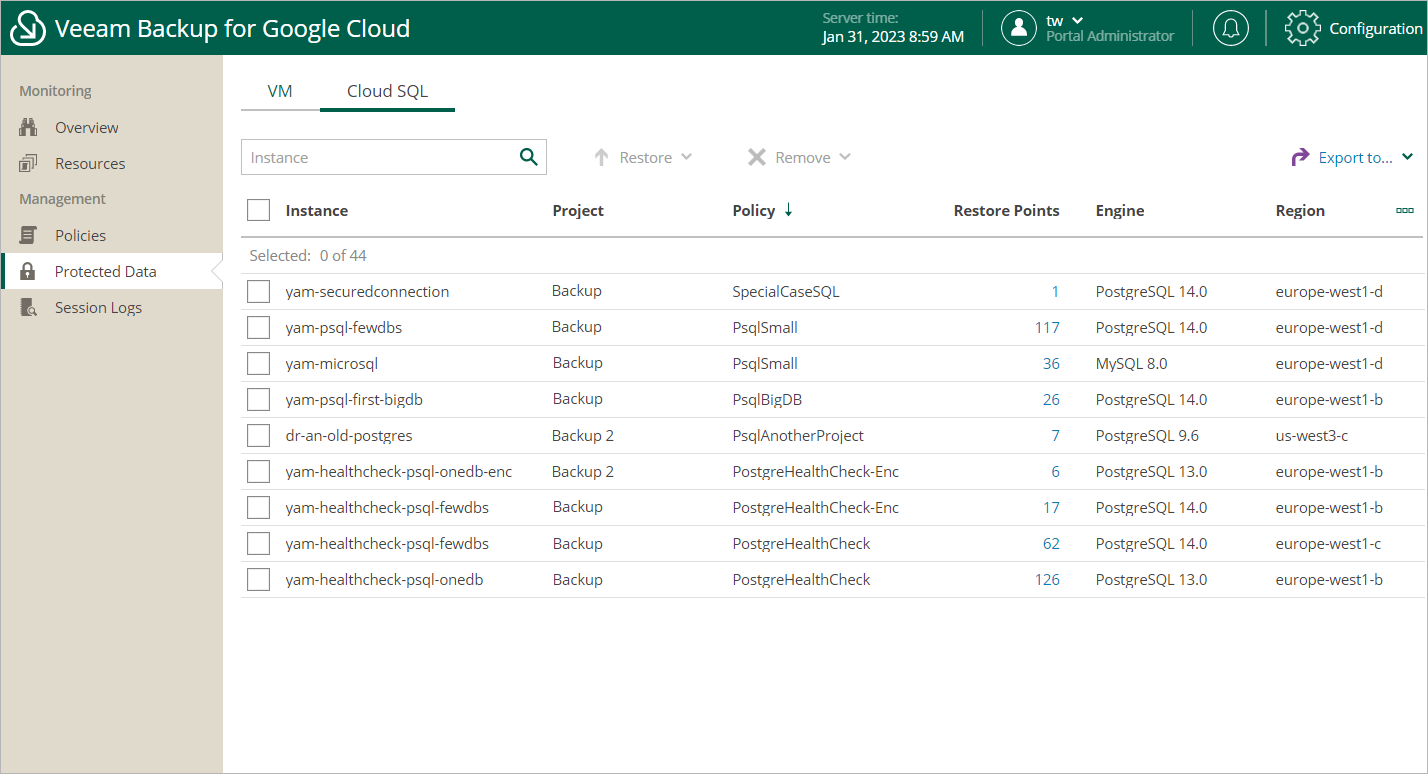 This is an archive version of the document. To get the most up-to-date information, see the current version.
This is an archive version of the document. To get the most up-to-date information, see the current version.Viewing Protected Resources
After a backup policy successfully creates a restore point of a Google Cloud resource, or after you create a snapshot of a resource manually using Veeam Backup for Google Cloud, the resource is automatically added to the resource list on the Protected Data tab.
The Protected Data tab displays Google Cloud resources that are already protected by Veeam Backup for Google Cloud. Each resource is represented with a set of properties, such as:
- Instance — the name of the resource.
- Policy — the name of the backup policy that protects the resource.
- Restore Points — the number of restore points created for the resource.
- Latest Restore Point — the date and time of the most recent restore point created for the resource.
- Region — the region in which the resource resides.
- Engine — the database engine and version installed on the Cloud SQL instance.
- Instance Size — the machine type of the VM instance.
- Operating System — the operating system running on the VM instance.
- File-level Recovery URL — the link to the File-Level Restore browser.
The link appears when Veeam Backup for Google Cloud starts a restore session to perform file-level recovery. The link contains a public DNS name of the worker instance hosting the File-Level Restore browser and authentication information used to access this worker instance.
On the Protected Data tab, you can perform the following actions:
- Remove restore points if you no longer need them. For more information, see Removing Backups and Snapshots.
- Restore data of backed-up VM instances and Cloud SQL instances. For more information, see sections Performing VM Restore and Performing SQL Restore.
